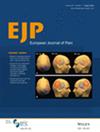Painful Mondays: Exploring Weekly Sleep Variations and Pain Perception in Healthy Women—An Experimental Study
Abstract
Background
Acute experimental sleep deprivation induces pain hypersensitivity, particularly in females. While the impact of extreme sleep loss on pain perception has been largely studied, how subtle sleep fluctuations, for example, sleep variations across the week, affect pain perception remains unclear. This study investigated how weekly sleep variations affect pain perception in young healthy women.
Methods
A sleep-monitoring headband and self-reported questionnaire were used to assess sleep. Quantitative sensory testing was conducted on Monday and Friday, including heat, cold, pressure pain thresholds, tonic pain summation and conditioned pain modulation.
Results
A total of 26 healthy young (23.9 ± 0.9 years) women were included. Repeated measures ANOVAs revealed significant sleep variation across the week, including differences in N3 sleep stage duration (M = 89.2 ± 5.42 min; p = 0.022, lowest on Friday and Sunday nights), bedtime (M = 00:56 AM ± 0.29; p = 0.038, latest on Friday vs. Sunday night) and wake-up time (M = 07:04 AM ± 0.30; p = 0.007 latest on Saturday vs. Monday morning). With most changes affecting Sunday night and Monday morning, pain sensitivity was higher on Monday compared to Friday, with a lower heat pain threshold (B = −11.89; p = 0.002) and increased heat pain summation (B = 1.65; p < 0.001).
Conclusions
The results showed higher heat pain hyperalgesia on Mondays due to weekly sleep variation. Since sleep is a modifiable factor, maintaining a consistent sleep schedule throughout the week could benefit pain management, particularly in chronic pain patients with less effective pain modulatory pathways.
Statement of Significance
How weekly sleep variations in real life between weekends and weekdays affect pain perception has not been studied before. This paper provides the first evidence that natural weekend–weekday sleep alterations, including shifts in bedtime and wake-up time over the weekend and the transition back on Sunday night, heighten pain sensitivity on Monday—known as the ‘Monday effect’. The compromised pain pathways on Monday underscore the importance of maintaining a consistent sleep schedule throughout the week, potentially benefiting patients with chronic pain.
Study Preregistration Statement
The authors have nothing to report.


 求助内容:
求助内容: 应助结果提醒方式:
应助结果提醒方式:


